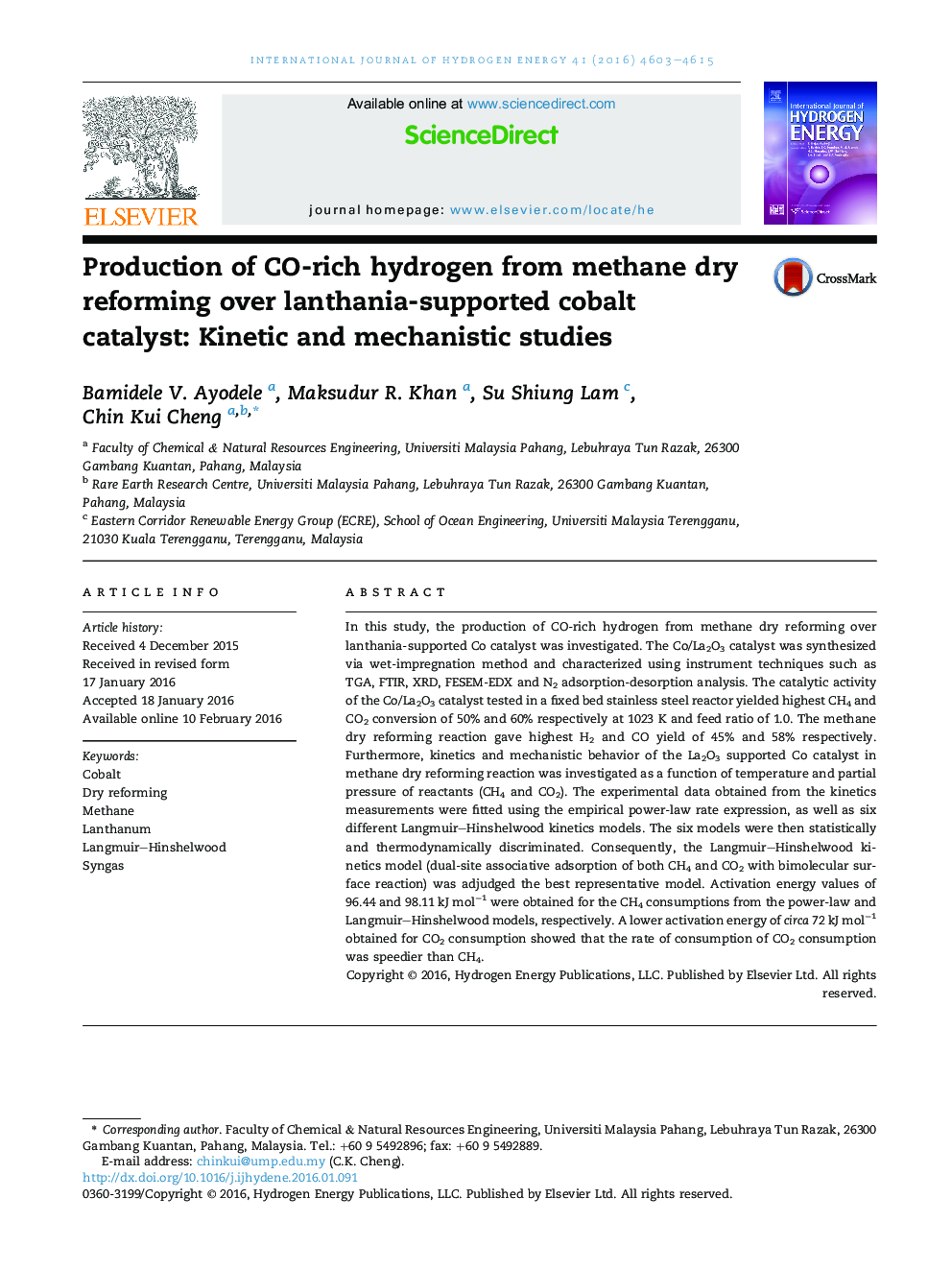| Article ID | Journal | Published Year | Pages | File Type |
|---|---|---|---|---|
| 1271148 | International Journal of Hydrogen Energy | 2016 | 13 Pages |
•20wt%Co/80wt%La2O3 catalyst was synthesized using wet impregnation method.•Activation energy for CH4 and CO2 were 96.44 and 72.22 kJ mol−1, respectively.•Activation energy for H2 and CO were 101.5 and 69.71 kJ mol−1, respectively.•H2 was produced from CH4 decomposition while CO was from the reverse-Boudouard•Catalytic reaction data were fitted to various Langmuir–Hinshelwood models.
In this study, the production of CO-rich hydrogen from methane dry reforming over lanthania-supported Co catalyst was investigated. The Co/La2O3 catalyst was synthesized via wet-impregnation method and characterized using instrument techniques such as TGA, FTIR, XRD, FESEM-EDX and N2 adsorption-desorption analysis. The catalytic activity of the Co/La2O3 catalyst tested in a fixed bed stainless steel reactor yielded highest CH4 and CO2 conversion of 50% and 60% respectively at 1023 K and feed ratio of 1.0. The methane dry reforming reaction gave highest H2 and CO yield of 45% and 58% respectively. Furthermore, kinetics and mechanistic behavior of the La2O3 supported Co catalyst in methane dry reforming reaction was investigated as a function of temperature and partial pressure of reactants (CH4 and CO2). The experimental data obtained from the kinetics measurements were fitted using the empirical power-law rate expression, as well as six different Langmuir–Hinshelwood kinetics models. The six models were then statistically and thermodynamically discriminated. Consequently, the Langmuir–Hinshelwood kinetics model (dual-site associative adsorption of both CH4 and CO2 with bimolecular surface reaction) was adjudged the best representative model. Activation energy values of 96.44 and 98.11 kJ mol−1 were obtained for the CH4 consumptions from the power-law and Langmuir–Hinshelwood models, respectively. A lower activation energy of circa 72 kJ mol−1 obtained for CO2 consumption showed that the rate of consumption of CO2 consumption was speedier than CH4.
